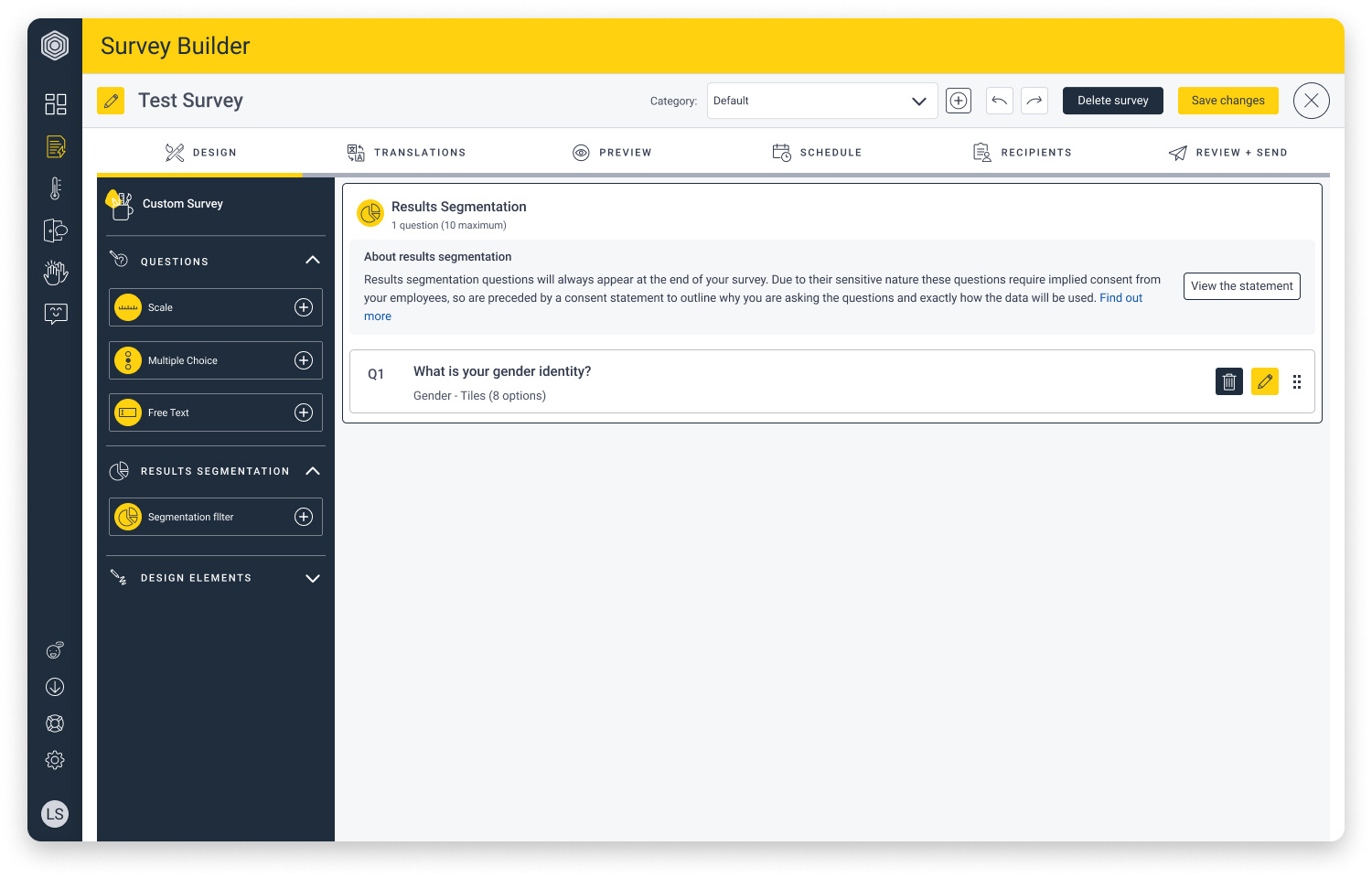Results Segmentation
Your people are so much more than their HR files. Hive allows you to filter your results by employee-identified characteristics on a survey-by-survey basis. That way, you can take a truly inclusive and agile approach to diversity in your organisation—while also uncovering a whole new layer of insight.
Article contents
- What is results segmentation?
- Why is results segmentation valuable?
- How does results segmentation work?
- Is there anything to be careful of?
- Will employees' identities be protected when using results segmentation?
- FAQs
- Download our guide to results segmentation questions
What is results segmentation?
When you include results segmentation questions in a survey, you’ll be able to filter the overall responses to that survey by the answers to any results segmentation questions.
So for example, if you were running a survey to evaluate your benefits package, you might ask a results segmentation question along the lines of…

…then you’d be able to look at how people who responded “Yes” to this question answered the other questions in the survey, and compare that to those who responded “No”.
Why is results segmentation valuable?
This means you can look specifically at how certain groups of people are feeling within your organisation—even when the shared characteristic that links them is not shown in your HRIS.
So for the question in the example, segmenting the survey results by people’s responses to that question should highlight whether your benefits package caters well enough for people with adult care responsibilities.
How does results segmentation work?
Get in touch with us to enable results segmentation in your Hive. Once that’s done, you’ll see an option within survey builder to add results segmentation questions.

You then just add them into your survey as you would with other questions, either choosing from our People Science-approved questions, or writing your own.
When you add these questions into a survey, they will always appear alongside a consent message to reassure your employees that their responses are protected and optional.
And then, once the feedback starts to come in, you can segment your survey results by the responses to these questions.
Is there anything to be careful of?
It’s really important that we take into account the sensitivities that often surround questions (and answer options) that relate to personal characteristics and D&I. That’s why these questions will always come after a consent statement in a survey and must be optional.
That also means we need to be careful in the wording of the questions and multiple choice answers to make sure no offence is unintentionally caused. With that in mind, Hive’s People Scientists have come up with some results segmentation questions that you can use for peace of mind. But if you want to come up with your own, make sure a D&I expert reviews them to cover your bases.
Will employees' identities be protected when using results segmentation?
Yes, the confidentiality threshold still applies to these questions.
Do employees have to answer these questions?
We recommend/all results segmentation questions come with the option ‘prefer not to say’, so employees don’t have to answer these questions if they don’t feel comfortable.
FAQs
Where do I create Results Segmentation Questions?
You can create and manage all of your Results Segmentation Questions in My Question Bank. This is your central hub for creating, editing, and translating your questions.
How do I add Results Segmentation Questions to a survey?
When building a survey, head to the Design tab in Survey Builder. From there, you can add them from your Question Bank, just like you would with any other reusable question.
How do I translate my SSD questions?
In My Question Bank, open the SSD you’d like to translate. You can either:
- Use the machine translation option (and tweak the wording if needed), or
- Enter your own translations manually.
The platform will flag if you’ve missed any translations, so you always know your survey is complete.
Can I edit the response options for SSD questions?
Yes, you can change the wording or add/remove options in My Question Bank before you use the question in a survey. Once the question has been used in a survey, it will be locked for reporting consistency (however, you will be able to add new options to the question).
Can I use “Self-describe” instead of “Other”?
Absolutely. You can rename the “Other” option to something more inclusive, such as “Self-describe”, to give people a respectful way to share their identity.